According to doctors, about 15% of people on the planet have a deviated nasal septum. At the moment, medicine is able to correct this deficiency very effectively.
Operation on the nasal septum takes relatively little time, but the postoperative period lasts much longer and is in many ways a more significant stage. During this period, complications may arise that require additional treatment.
Photos before and after surgery
How long does the rehabilitation period last?
This period lasts about 4 weeks and is divided into two stages:
- postoperative - you will need to walk with tampons and breathe through the nose, but this period lasts quite a bit from one to three days in time, depending on the individual history;
- restorative - usually lasts up to three weeks, although full recovery may take longer - 8-12 weeks.
Before the start of the recovery period, the doctor removes the tampons and prescribes appropriate treatment. You will need to use drops from crusts, drugs that prevent the development of infection.
The length of rehabilitation depends in part on general lifestyle habits and body condition. Compliance with the doctor's prescriptions matters. The logic is simple: the better the body feels as a whole, the faster the recovery takes place.
What recommendations to follow in the postoperative period
Specialists give patients a list of prescriptions, but it is better to list what not to do:
- consume alcohol, cigarettes and other harmful substances;
- tilt your head during the day;
- visit the beach and pool;
- go to a bathhouse or sauna;
- To wear glasses;
- do physical exercise, endure heavy.
Besides you need to try to sleep only on your back and in every possible way avoid infections and colds... Washing your hair is especially difficult. During the first week, you will need to completely abandon this procedure. After a week, shampooing becomes possible, but you cannot tilt your head and moisturize the paranasal region.
Features of the recovery period
Even if the operation on the nasal septum is performed carefully and professionally, the postoperative period is accompanied by unpleasant sensations. During the recovery period, they are considered absolutely normal.
Before the body has fully recovered (usually up to 12 weeks), various symptoms may appear:
- sore throat and toothache;
- pain in the nose;
- allergic reaction;
- tearing;
- strange sensations in the skin.
Most of all these sensations are caused by deformation of the nerve tissues that are located in the nasal sinuses. These tissues may be associated with those that also innervate the areas near the gums and teeth. Accordingly, the sensations spread over the entire area of the face.

 Don't miss the most popular column article: Cannula - what is it, how is it used in cosmetology and medicine.
Don't miss the most popular column article: Cannula - what is it, how is it used in cosmetology and medicine.When to remove the bandage
Depending on the complexity of the operation performed, the period of wearing a plaster or thermoplastic bandage is determined. Usually, the time range is 7 to 14 days.
During the first two weeks, doctor visits should be regular - every 2-3 days.
Accordingly, it is he who accurately determines the period of removing the bandage, but much depends on how quickly the tissues are restored.
Why isn't the nose breathing?
Operation on the nasal septum (the postoperative period is almost always accompanied by one or another difficulty associated with breathing) directly affects the respiratory tract, so at first it is possible to breathe only through the mouth - before the tampons are removed.
After that, a bandage remains, which can also slightly compress the airways. Then, for about three weeks, swelling persists, and crusts can form, which impede the flow of air. Regardless of the reason for the shortness of breath, there is no particular way out and you will have to endure this time.
Swelling in most cases will subside almost completely after three weeks, then minimal discomfort may remain, which eventually also disappear. Complications need to be monitored and avoided, but basically, to complete the recovery stage, only a certain amount of time is needed.
How long does the swelling last
The duration of the preservation of edema depends on the individual characteristics of the organism, but the very fact of its appearance is mandatory, since it is a normal reaction of the body to tissue damage. The standard period is about 20 days, but may be longer.
The most striking edema is observed within seven days at the very beginning, after which it gradually subsides.
It is possible to predict how long the edema will last in a particular case by assessing how long wounds on the body or bruises heal. The longer this period lasts, the longer tissue edema will remain.
There are situations where the swelling persists for up to 12 weeks or more. And this condition is a variant of the norm. In addition, some organisms may exhibit a non-standard response to surgical intervention, and in this case, rehabilitation measures should be selected on an individual basis. For example, in some people, after the recovery period, the edema reappears in wet weather.
How to relieve swelling
The doctor will make precise recommendations, but most often he will offer one of the following directions:
- rest and bed rest;
- ice bandages;
- use of antihistamines;
- drugs that strengthen blood vessels;
- drops for vasoconstriction;
- nasal sprays;
- humidification of the room.
This is an integrated approach, i.e. you need to use several methods at once. In this case, the drugs must be taken strictly in accordance with the instructions and recommendations of the doctor. For example, you should not use antihistamines for more than 7 days in a row.
In addition, they carry out physiotherapy procedures, including massagewhich can be done independently. Massage movements should be smooth and light, and the direction of the massage lines is respected. Thanks to this effect, tissue trophism is improved.
After removing the stitches, wound-healing ointments are prescribed. They also help relieve swelling and help tissue repair without additional complications.
Runny nose
It is one of the most common symptoms that occur during or a little after the recovery period. The reason is the destruction of the mucous membrane, which takes time to recover.

As a rule, an operation on the nasal septum with a normal postoperative period does not give complications in the form of a chronic rhinitis or sinusitis. You just need to wait for full recovery. Then the mucous membrane will return to normal and will work as before - the runny nose will disappear.
The seam festers
It is necessary to regularly check whether the seam has festered., since when this complication occurs, you must immediately consult a doctor. A festering suture by itself does not pose significant inconveniences, but if the infection begins to develop and penetrate deeper, then more serious consequences may arise, in particular, blood poisoning.
At the beginning of the recovery period, antibiotics are prescribed to help prevent the appearance of pus.... Then you should carefully monitor the condition of the seam. A festering suture should not be treated with pain relievers and left unattended. When seeking medical attention, the doctor cleans out the pus and eliminates the root cause of its appearance. Next, you will need to follow his recommendations.

 Don't miss the most popular column article: Alentova Vera after plastic surgery - the last photos, what operations were performed, how the star changed.
Don't miss the most popular column article: Alentova Vera after plastic surgery - the last photos, what operations were performed, how the star changed.Sinusitis
Operation on the nasal septum (the postoperative period may be associated with certain complications) is often combined with the appearance of nasal discharge, in particular green snot. They often indicate the body's immune response and not just normal, but even good recovery.
However, this very symptom can also be a symptom of sinusitis. Therefore, if you notice discharge from the nose, you should immediately consult a doctor... The disease is an inflammatory process in a sinus and requires antibiotic treatment, and sometimes surgery.
Violation of the integrity of the nasal septum
This option is most often caused by a deterioration in the nutrition of cartilaginous tissues.
The so-called perforation begins, the symptoms of which may be:
- feeling of dryness;
- discomfort in the septum;
- purulent discharge.
With such damage, you will need to do the operation again.
In the process of its implementation, the specialist takes a piece of adjacent tissue and covers the damaged surface. As a result, the integrity of the septum is restored, and the tissues again fully perform their functions.
Formation of synechia
This term translates as jumper or splicing. We are talking about when additional fusion occurs between the walls of the vessels. The result is a decrease in the size of the nasal cavity and, accordingly, breathing difficulties appear.
Synechiae are also treated surgically, but the operation can also be performed with a laser. After that, special tires are installed in the cavity, which do not allow the vessels to grow together further and allow the cavity to recover normally.
Deformation of cartilage and bones
As a result of treatment, various deformities can be observed:
- narrowing of the arch;
- partial curvature;
- narrowing of cartilage;
- reduction of the wings of the nose.
To eliminate these complications, a second operation will be required. The presence of deformities can be determined by secondary symptoms such as dry throat and mouth, change or decrease in the brightness of taste and smell.
Bleeding
Operation on the nasal septum (the postoperative period is sometimes accompanied by the appearance of hematomas, but this is a rare occurrence) implies the wearing of special drainage afterwards. This rubber insert, which the surgeon installs from the edge of the incision, prevents the build-up of blood clots and bleeding.
How to restore breathing
At the initial stage, breathing through the nose may not be available at all. Even if the surgeon inserts the tubes, it is difficult to breathe through them. To make breathing easier in the future, ointment and drops from crusts are useful.
Mucosal restoration
To restore the mucous membrane, use drops for washing, for example, such as Aqualor or the like helps to remove the crusts, after which the cavity is cleaned with cotton wool.
Ointments like Naphthyzin help not only remove crusts, but also dryness in the nose.
Why the sense of smell is lost and how to restore
The sense of smell can be lost due to complications. If none are found, then we are talking about an individual reaction. Over time, the sense of smell is restored on its own, especially if you follow the recommendations for the recovery period, which were given earlier.
Hygiene of the nose after surgery
Every day, you will need to thoroughly rinse the nose, remove a variety of impurities and secretions. Taking care of hygiene is also necessary in order to be able to track the occurrence of complications.
The care process consists in regular rinsing with drops based on sea salt (for example, Aqualor noted earlier) and the use of emollient drops.
Oil-based drops and rhinitis drops are also useful. For example, a specialist may prescribe Polydex or Fliksonase.
If you get an infection
A five-day course of antibiotics is prescribed to get rid of the infection., in addition to which topical antibiotic ointment may be used. But it is necessary to identify what kind of infection caused the inflammatory process. The specialist must take a sample of microorganisms and, based on the results obtained, select the optimal ointment.
There is an interdependence between the general condition of the body and susceptibility to infections. therefore before the operation, you should strengthen your own immunity and the body as a whole, for example, through vitamin therapy. If you have an infection, you should definitely contact a specialist and do not prescribe antibiotics yourself.
Nutritional recommendations
In addition to restricting spicy and hot food, doctors give practically no advice regarding diet. However, the relationship between food intake and the rate of recovery must be clear.
During the recovery period, it is recommended to focus on food rich in vitamins and useful in all respects.
Better to focus on various smoothies and fruit juices, because they are not only useful, but also liquid, and at the initial stage of the recovery period, such food should be preferred. Before the stitches are removed, you should not eat food that is difficult to chew. Also, you should not consume foods that can provoke sneezing, allergies, and the like.
What to do with a cold?
Colds are not a disaster during this period, but it is advisable to quickly recover. Self-medication in this case is unacceptable, since many drugs can provoke bleeding and, as a result, worsen the recovery process. When a cold occurs, you need to contact an otolaryngologist to provide a list of drugs needed for treatment.

 Don't miss the most popular column article: How and why ribs are removed - efficiency, photos before and after surgery.
Don't miss the most popular column article: How and why ribs are removed - efficiency, photos before and after surgery.Can I blow my nose?
Gentle rinsing of the nasal cavity is optimal. For this, a mixture based on sea salt is used (purchased drops) and then Miramistin can be used, which disinfects, heals and reduces the amount of secretions.
Blow-outs and similar influences are not permissible. Only lavages are prescribed that do not affect tissues, especially cartilage, which are in the process of restoration.
If there is a significant amount of snot that makes breathing difficult, you need to consult a specialist for advice.
Septum surgery price
The cost may differ depending on the clinic and sometimes we are talking about the amount many times more. Nevertheless, the lower level is about 20 thousand rubles, and the upper limit is about 50-100 thousand rubles.
The cost depends on the type of operation:
- endoscopy;
- radio wave;
- laser;
- ultrasonic;
- classic.
The classic version is more affordable. Other options are considered more expensive. Also, the cost increases if additional correction is performed, for example, the skeleton of the septum.
You need to carefully follow the doctor's instructions and monitor your well-being after surgery on the nasal septum. In the postoperative period, complications may appear that require immediate additional treatment. Otherwise, the recovery period runs smoothly and only a certain amount of time is needed to normalize the condition.
Video about nasal septum surgery
How such a procedure is carried out - says the doctor:
The first days after surgery:

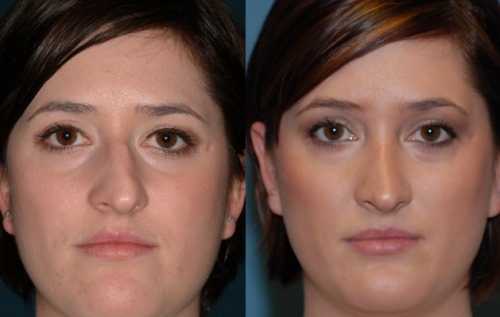
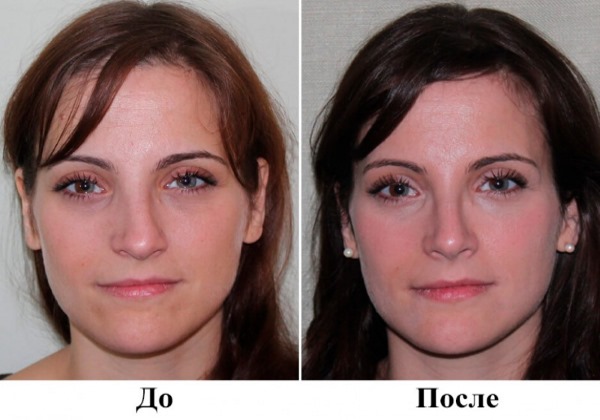
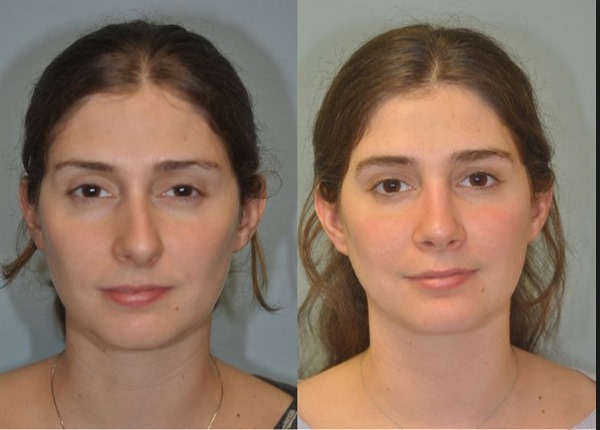

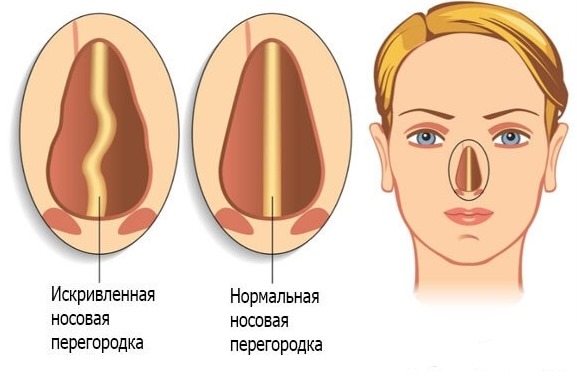

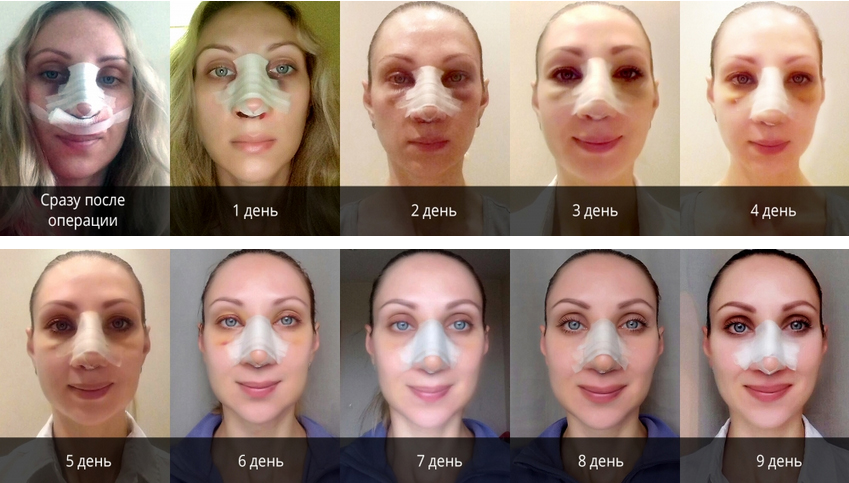
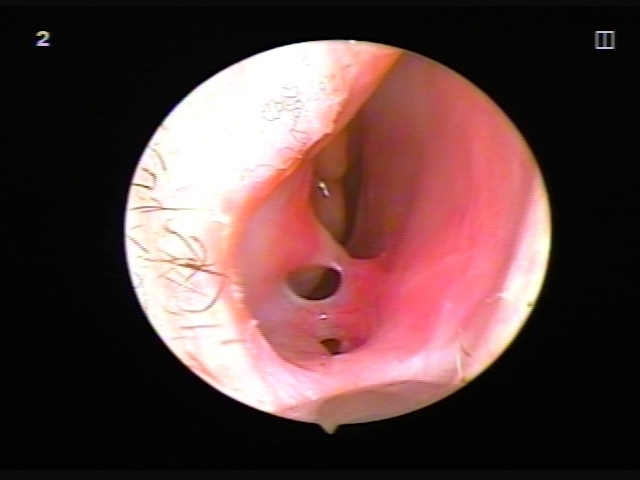
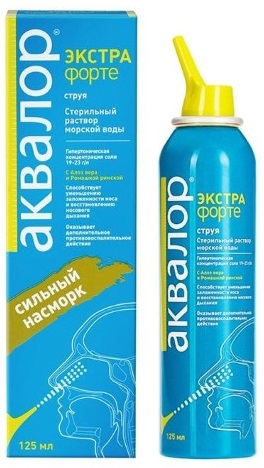
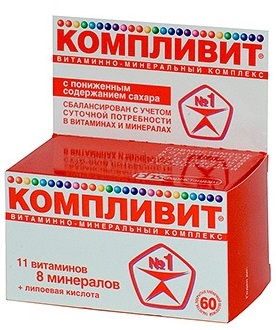

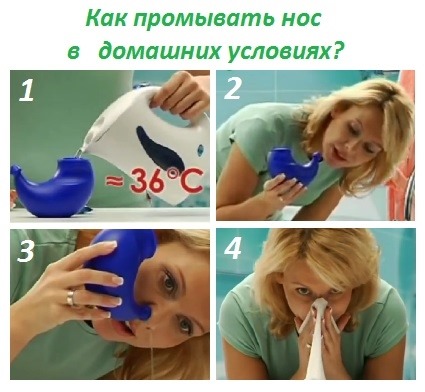
Probably, there are really situations when such an operation cannot be done without. But I would not have dared to do it.
I have the 4th day after the operation
A week after being discharged from the hospital, where the septum operation was performed, there is a pressure of 140/90. Who knows why? And is it normal or not?
In general, the doctor should explain all this before the operation, it was so with me when I decided to remove the curvature of the nasal septum. The operation (at a low price for Kiev !!!) was successful. Without complications and problems, while everything healed.
I did it in 2015, after the operation, constant inflammation and my head hurts, my nose began to breathe better, but the doctor did not say much that the shells had to be expanded, I’m afraid I talked in the hospital, they say that there’s no point in spending money down the drain after 6 months. everything is back, and now in winter if you take a deep breath through your nose, it’s scary to breathe in even a second time, but you really want to take a walk in the forest in winter to breathe
I ventured into the operation. I had a deviated septum with a thorn, and also had a cyst removed in my sinus. I went to bed on Monday. On Tuesday, they did it, at about 11:00, lay down in intensive care, and at 14:00 they brought me to the ward. The operation itself is as usual and not particularly scary. The legs were wrapped in tourniquets, as they explained, to prevent some blood clots. I didn't really go into it, since it is necessary, then it is necessary. Then on the bed to the operating room, there on the gurney, on it to the operating room itself. There the dropper is in the hand, the right hand is on the tonometer, the legs were tied with a belt, and the right hand was stuck there. The anesthesiologist put on a mask and offered to breathe. Somewhere on the third or fourth breath, I flew to the land of dreams. I woke up only in intensive care, I think it was her. After the operation, everyone was kept there. There were other patients behind the partitions. Someone breathed with a stretch, someone groaned, someone asked for anesthesia. In general, everything is individual. I fell asleep, then woke up, a little storm. In general, I was recovering from anesthesia. By the way, anesthesia was common. I think it's good, fell asleep, woke up and that's it. Already in the ward, I photographed myself on a mobile, looked at the potatoes instead of the nose on the floor of the face, from which some threads stick out, glued to the nose and a napkin on top of them. Neighing, of course to himself, because he didn't feel like talking, drinking or eating. The nose hurt, it hurt over the upper lip, but bearable. Pain medications and intravenous antibiotics were given twice a day. Then it became easier, he refused the anesthetic himself.The most difficult thing is to endure the first day, who did understand me, who did not, they are afraid of nothing. Gradually you get used to breathing only through your mouth. In fact, now you can safely practice diving without training. Then, when the tampons are taken out, for several days, due to swelling inside and congestion with mucus, out of habit you only breathe through your mouth. Sometimes you force yourself to breathe through your nose - you lose the habit. The first day you practically do not sleep, your mouth dries up. I soaked a gauze cloth, put it on my mouth and breathed through it, it's easier to tolerate. Well, you drink from time to time. You check the time almost every minute. It is important to adjust yourself psychologically. I really wanted to pull out the tampons myself so that I could breathe normally. Then you set yourself up, and you calm down (others can, did, why can't I bear it ...). A day later, also at the beginning of 12 hours, the tampons were taken out. On the round, the doctor said that the tampons were taken out at 11:00. For the sake of decency, I waited until 11.05 hours. They did not call me, I already wanted to go myself, demanding urgently take out the tampons. Then he calmed down, tuned in and waited another half hour for his turn. The tampons were pulled out immediately, unpleasant, but not painful. There were no bruises. No blood flowed, only slightly bleeding. Washed out, sucked and breathed through his nose. At first they glued a napkin, but this is so that if it closes, then on it. Then the mucus accumulates again and clogs up the nose (as with a cold). But it's easier to sleep. When you lie on your back, in spite of mucus in your nose, the passage for air remains. You sleep well. On the second day, the lavage was more extensive. In addition, the sinuses were washed with a probe, two powerful clots of clotted blood were washed out of both. Subsequent flushing and suction of mucus became familiar. Throughout the entire time, he washed it with an aqualore and dripped oil. Discharged on Saturday. After discharge for another week I was on outpatient treatment, every day I went to wash, sucked mucus. Then the sick leave was closed. Then he washed with Aqualor himself, instilled peach oil, well, everything is as usual. Now a month has passed, exactly today. Everything is fine, my nose practically stopped hurting. But there is a feeling that not everything has been restored inside the nose. But they say it should be so. On the whole, I am pleased with myself that I have decided on an operation. A little later I want to go for a control examination to make sure that everything is OK. I wish everyone health and not to get sick.
Thank you Ruslan for your detailed comment. This operation is due tomorrow.
Ruslan described everything exactly. They did it too, tomorrow for discharge.
I am Elena Aleksandrovna, 50 years old. In GKB 50, on the Timiryazevskaya metro station, in the Otoloring department of this Hospital, building 3, department 3, I underwent a Complex Operation, not like Everyone on a chair with local Anesthesia, and on the Operating table with General anesthesia - Great, although before hospitalization I watched both Operations both on a chair with a simple injection and on a table with General anesthesia under a mask. The day after everyone was discharged on Saturday, already there were no Doctors from Friday from 4 pm. The last time I was treated nasal septum, tampons are removed only by specialists on the second day, temporary small tampons with medicine are put in for two hours and removed. T, to, it was Saturday and there were no doctors, I was treated by the Intern and made me Blow my nose after, I said I'm afraid and My doctor taught me to pull everything into myself and spit , but you can neither draw in strongly with Air, nor later when blowing your nose - with only one finger close one nostril from the bottom without pressing and gently blow your nose slightly without strong tension, then just with the other hand. Spray Aqualor helps, ointment with cotton swabs Methyluracil, when the ointment is absorbed, also with a cotton swab Peach Oil-Healing. The swelling of the nose and a little near there is but subsides quickly, and INCLINATIONS to the bottom of the head really lead to Bleeding, so does the heaviness- or anything heavy, if the slopes are slightly THEN Only by HITTING and taking something at the bottom, follow exactly the doctor's recommendations. Everything goes on until the end of 2.5 months.
Hello a month ago I did a similar operation ... but there was a problem .. by the evening the temperature rises 37, 37.4 .. now I drink antibiotics for 6 days I hope it will help (((
After the operation, the relief did not come for long. After 4 months, a stuffy nose. The sense of smell has dulled.A year after the operation, difficulty breathing is observed, the cartilage has not fully recovered at the site of elimination of the curvature, the septum is not straight, it is still displaced, above the cut point of the ridge, air practically does not enter the frontal sinuses, breathing with a whistle, the night passes in the struggle for every breath, such feeling that the bridge of the nose is swollen. But there is no edema or sinusitis. Prescribed Nasonex and vasoconstrictors do not help. The air just doesn't pass. If possible, do not perform the operation.
Denis, good afternoon. My son also had an operation. The temperature has also been rising to 37 for a month now. I drank antibiotics after the hospital for 10 days. But the temperature holds. How to go to work?
Share how it was with you? how long did you get to work? Thanks in advance